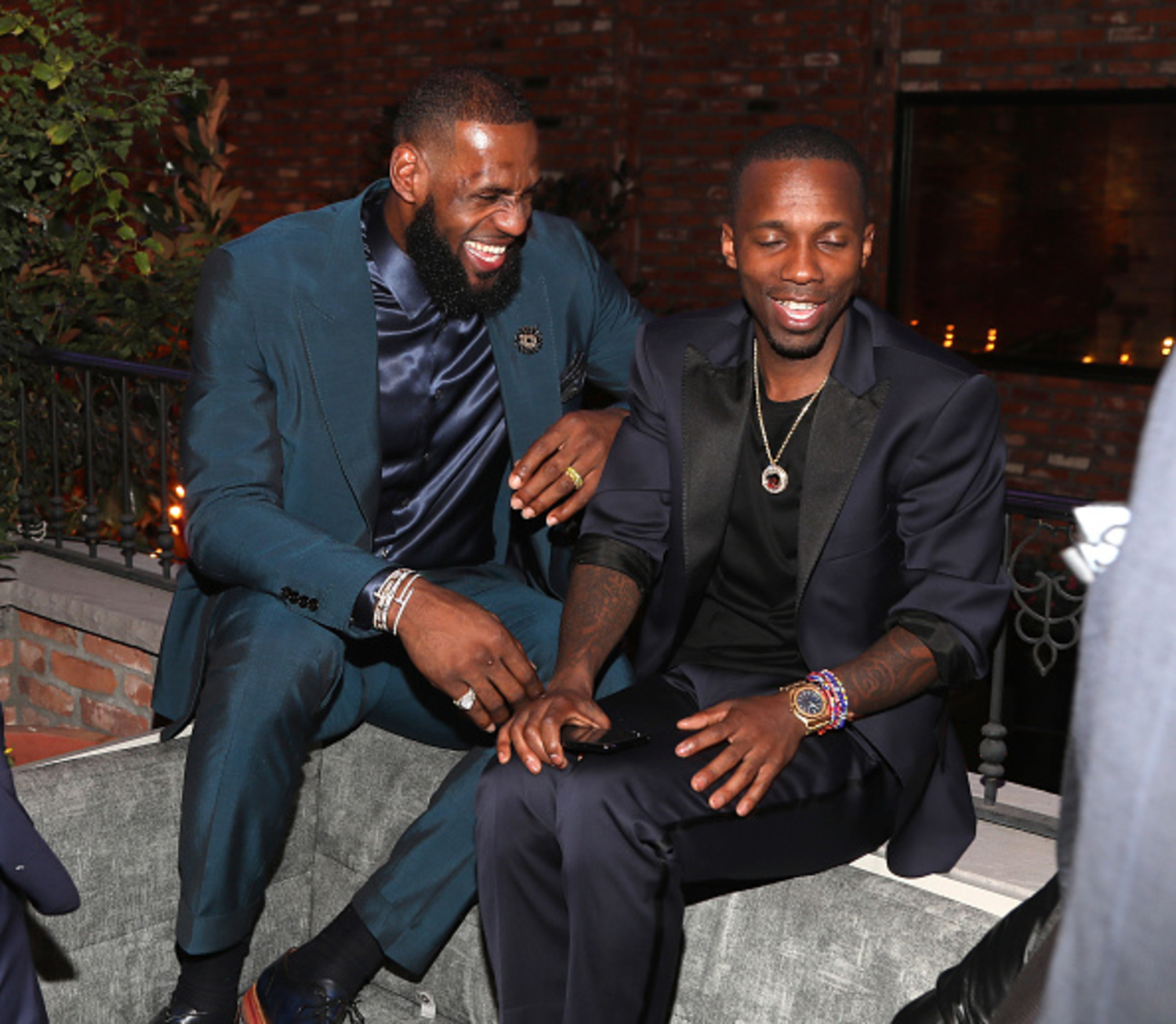Table of Content
- Black Americans And The Racist Architecture Of Homeownership
- Eintracht Frankfurt
- Topic pages give a complete story through data visualizations
- Other sections within the club
- Army service increases long-term earnings and closes the Black-White earnings gap
- Habitat’s commitment to closing the Black homeownership gap
- People & Society
To avoid an increase of residents being pushed out of their homes due to gentrification and rising taxes, Rice says more states need to adopt homestead programs in which tax relief benefits are given to eligible homeowners who are struggling to pay their bills. In Detroit, for example, a third of the city's properties have foreclosed since 2008 as a result of rising costs and tax inflation due to gentrification. Recently, an investigation by The Detroit News found that homeowners in the city had collectively been overtaxed by at least $600 million following the Great Recession, meaning that a majority of residents faced an unfair surcharge in taxes on their property. As a result of this tax foreclosure crisis, Michigan's Black homeownership rate dropped from over 50% in 2000, to 40% in 2016. To fully estimate the implications for homeownership, we would have to consider first-time vs. repeat buying, home sales, and household growth rates which is beyond the scope of this work. However, homebuying trends are indicative of potential shifts in homeownership and an important part of the equation.
Drivers of the racial wealth gap include family financial support, unemployment, college-educated status, and household income, but the primary driver is homeownership. The U.S. Census Bureau reported that, as of December 31, 2020, the rate of African-American homeownership is 44.1 percent, whereas the rate of White homeownership is 74.5 percent. At all income ranges, even at incomes above $100,000, homeownership rates are lower for African-American households than for White households.
Black Americans And The Racist Architecture Of Homeownership
Prior to the pandemic, Black homeownership had already hit a record low of 40.6% in the second quarter of 2019. Though that figure increased to 47% for the second quarter of 2020, data from the U.S. Since returning home from college in 2012, McAllister says he's seen how homeownership has shifted in his neighborhood with many long-term residents moving out as home prices have increased over the last few years. Right now, homes in Bedford-Stuyvesant are selling for a little over $1 million, according to Zillow. But, with the coronavirus impacting the economy, home prices across the U.S. are expected to fall by 2-3% this year, making it even more important for McAllister to hold on to his family's brownstone.

The A5 becomes as wide as four lanes in each direction near the city of Frankfurt am Main, and during the rush-hour, it is possible to use the emergency lanes on the A3 and A5 motorway in the Rhine-Main Region, adding additional lanes. Other major leading Hesse highways are the A4, the A44, the A45, the Federal Highway A66 and the A67. There are also a number of smaller motorways and major trunk roads, some of which are dual carriageways.
Eintracht Frankfurt
In May 2021, the number of Black buyers increased by 41.4% YOY, and the non-Black buyers surged by 49.9%. The larger difference in the growth rate could be driven by the skyrocketing price growth last May. In May, the year-over-year increase in median sales price reached a new record high (20%) and has not been surpassed since then. Data shows that several swing states where Black homeownership dropped between 2008 and 2016 — Michigan, Pennsylvania and Wisconsin —also saw significant decreases in Black voter turnout in an extremely close election. For example, Black homeownership was near 45% in Michigan in 2008, with Black voter turnout north of 70%, but dropped below 40% in 2016, with voter turnout also dropping to 60%.
Homeownership is a major component of individual wealth in America, and racial disparities in homeownership therefore play a role in determining how wealth is distributed across demographic groups. For more data on the demographics of income, plus education, policing and more, visit the race in America page. Presidential candidate Joe Biden recently released the fourth pillar of his Build Back Better agenda focusing on advancing racial equity amidst the nation’s economic recovery from COVID-19.
Topic pages give a complete story through data visualizations
"And because of that perception, it became a self-fulfilling prophecy. That is, it became true that a Black person moving to your neighborhood meant your value declined because, of course, property values are largely the function of social decision and social beliefs." Josh Sides, a professor of history at California State University, Northridge, says those numbers strongly suggest Johnson's family was a target of blockbusting. And after more Black residents moved in, home prices languished in Compton over the next several generations. Kitty Felde, who is white, grew up in Compton in the 1960s and remembers a flyer appearing under her family's front door. "It had one very clear message and it was, 'Sell now, because you're never going to be able to get the money you want for your house.' And they didn't say this but it was like, they are moving in."

"It's inherently unfair that basically we raised the prices during the financial crisis so that these people who were hurt by the financial crisis could bail out the financial institutions," he says. Many financial experts agree that these kinds of payments are good indicators of one's ability to pay a monthly mortgage. A few months ago, DonnaLee Norrington celebrated her 60th birthday in the newly purchased Compton home she and her sister, MaryJosephine, now call their own. Norrington thought she would never own a home again after losing the condominium she and her ex-husband briefly owned before the financial crisis. She said losing that home had turned her credit upside down and from that point on, she rented. This is a pattern that has now been tracked all over the United States.
In addition, this substantial difference in homebuyers’ growth rate may lead to an even wider homeownership rates gap between Black and non-Black homebuyers. Non-African-American communities have taken for granted the nuanced messages of housing marketing campaigns; cultivating similar messages aimed at African-American communities could lead to an increase in homeownership rates. For Richardson, achieving this goal means building self-sufficiency within the African-American community through lending circles built on community trust, community asset building, and group savings, among other tactics. Alston says he got into real estate because he wanted to do something for his community — for people like Norrington — to change the persistent gap between Black and white homeownership. "I mean, it's pretty unbelievable to me almost 75% of the white community owns houses. ... And in my community, you know, it's like 2 out of every 10 in LA, 4 out of every 10 in the country," he says. In 2019, the homeownership rate among white non-Hispanic Americans was 73.3%, compared to 42.1% among Black Americans.
This pattern has played out in cities all across America — affecting communities of color most. It was an upheaval Rha's father told her would never have happened if Sugar Hill were a white neighborhood. "He was very, very angry. He felt the city government resented Black people living there, and this is their way of demolishing a very viable community to support racism," she says. But one white homeowners association did not like the way its neighborhood was changing.
Technology is a key factor in eliminating the homeownership gap, and the housing and financial services space should prioritize eliminating technology bias. The Tech Equity Initiative, launched by the National Fair Housing Alliance, combats the bias in risk-based scoring systems and automated underwriting systems for home purchases. Because 70 percent of net new households between 2021 and 2025 will be minority headed, addressing technology bias will enhance housing initiatives that take advantage of the digital space. These market gaps highlight a disparity between those with the desire to purchase a home and those able to do so. The panelists, however, stated that this gap could be overcome through homeowner education and counseling.

In separate statements to NPR, Fannie Mae and Freddie Mac said this type of pricing helps them manage risk, and has "provided stability during the pandemic and enabled homeownership for millions of families, including many families of color." In order to simply qualify for a loan, a potential borrower must be favorably "creditworthy" according to the lender. In the existing financial system, it is the FICO credit score that primarily determines that creditworthiness, but a third of Black Americans do not even have one. He says there are complex, systemic barriers holding Black Americans back from homeownership, many of them tied to the process of acquiring an affordable loan that actually allows them to retain and pass on generational wealth.
The speakers noted the cultural relevance of focusing on the Black homeownership gap in the context of 2020’s widespread acknowledgement of structural racism across many U.S. industries and institutions. Addressing the homeownership gap offers an opportunity to redress some of the material harms of past and present racism and to expand access for African-Americans to the potential wealth building of homeownership. "When you think about the economic hardships and lack of family-supporting jobs for African Americans, I can see how we’re falling behind in homeownership," Rainey said. "When you think about home ownership, it’s also a cornerstone of building wealth and how it impacts the economics of the black community as well." Alderman Khalif Rainey’s district includes Milwaukee’s Sherman Park neighborhood. In 2016, he created the city’s Office of African American Affairs to improve the quality of life for black people living in Milwaukee.
This 31.2 percentage point difference was the largest gap since the Census’ time series began in 1994. Between 1994 and 2019, the white homeownership rate increased by approximately 3.3%, while the Black homeownership rate declined by 0.2% over the time period. To ensure that discrimination doesn't happen during the home buying or renting process,Rice says more states need to implement their own fair housing rules and regulations since the federal government is looking to roll backfair housing laws at the national level.
Between February 2020 and March 2021, when home sales first stalled and then rebounded substantially for both groups, the average year-over-year growth was 6.9% for Black and 6.5% for their peers. The homeownership rate gaps between Black and other races still exist and have not been substantially narrowed. Rugh said there are proven interventions to help Black and other minority Americans have opportunities for safe, affordable home ownership. Those include lower down payments, safe home loans and consumer protection in the mortgage market.

The Fair Housing Act of 1968 recognized segregationist practices like redlining to be unconstitutional. But the law only prohibited future, formalized discrimination rather than undoing the foundationally racist landscape on which homeownership in America was built. Many mechanisms segregated housing and redlining wasn't the most common or most violent but redlining is the mechanism most often mentioned in the media. Redlining wasn't a Southern-based policy that spread up into the North. The demand for redlining segregation seems to have been strongest in the North. GettyIn a recent article here on the Biden housing plan, I mentioned the Paradox of the Black Home Ownership Rate – in the 30 years from 1940 to 1970 when housing discrimination against Blacks was legal and horrific, the U.S.


No comments:
Post a Comment